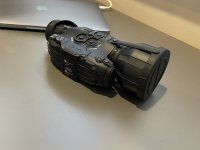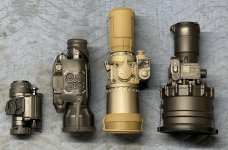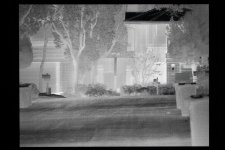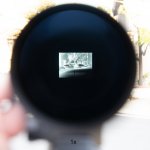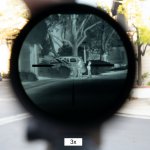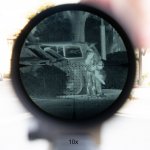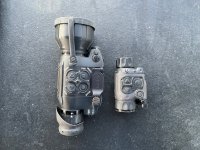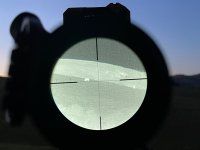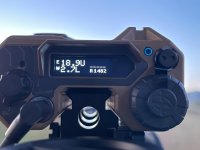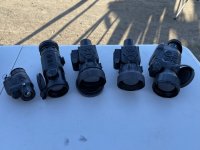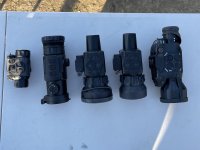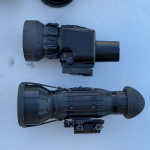Ever since the PoT VooDoo line was announced I have been interested in the M. From the recent reviews it sounds like the VooDoo-S does a good job at balancing hand held and clip on functionality if you are looking for a dual role device. However the downside it is you are compromising both in order to achieve both. I figured there are a lot of helmet mounted solutions which are becoming reasonably priced, so instead of getting a jack of all, but master of none, I would look into a dedicated clip on.
I have been wanting to pick up a UTC-Xii for a while now, but they have been hard to come by. Enter the VooDoo-M which on paper seems to rival the UTC-Xii specs in a smaller form factor, newer technology, and maintains TracIR compatibility. The TracIR is also interesting because PoT claims it can maintain zero through digital magnification. We will see how much of that is true. It may also have a leg up over the TigIR due to its focus adjustment.
Here are some of the specs:
Sensor: 640x480 BAE core
Spectral Range: 7.5-13.5um
Pixel Pitch: 12um
Sensitivity: <50mK
Digital Zoom: 0.5x/1x/2x/4x
FOV: 6.4deg x 4.8deg
Scope compatibility: 15x
It literally showed up today, so my time with it is limited. Initial impressions are that it is super solid and damn its got a lot of rear end de-mag. I can barely make out the text in the menu with my naked eye! Over the next few weeks I'll work to get some more photos through it at various ranges and magnifications. Unfortunately I don't have a SkeetIRX, UTC, etc. to compare it with. However I do have a buddy with a 320 FLIR HISS, so we will get to see that. In the meantime here are some pictures of the device with a few friends for size comparison. The image I took was using a mirrorless camera at 105mm and significantly cropped! The house is about 130 yards away.
I have been wanting to pick up a UTC-Xii for a while now, but they have been hard to come by. Enter the VooDoo-M which on paper seems to rival the UTC-Xii specs in a smaller form factor, newer technology, and maintains TracIR compatibility. The TracIR is also interesting because PoT claims it can maintain zero through digital magnification. We will see how much of that is true. It may also have a leg up over the TigIR due to its focus adjustment.
Here are some of the specs:
Sensor: 640x480 BAE core
Spectral Range: 7.5-13.5um
Pixel Pitch: 12um
Sensitivity: <50mK
Digital Zoom: 0.5x/1x/2x/4x
FOV: 6.4deg x 4.8deg
Scope compatibility: 15x
It literally showed up today, so my time with it is limited. Initial impressions are that it is super solid and damn its got a lot of rear end de-mag. I can barely make out the text in the menu with my naked eye! Over the next few weeks I'll work to get some more photos through it at various ranges and magnifications. Unfortunately I don't have a SkeetIRX, UTC, etc. to compare it with. However I do have a buddy with a 320 FLIR HISS, so we will get to see that. In the meantime here are some pictures of the device with a few friends for size comparison. The image I took was using a mirrorless camera at 105mm and significantly cropped! The house is about 130 yards away.

